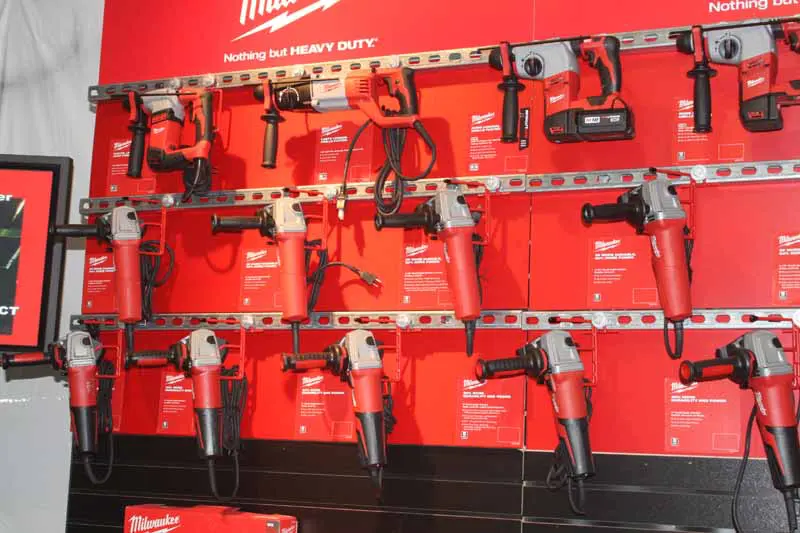Rick Gambaccini introduced the 2011 Milwaukee Tools corded tools in concrete and metalworking by restating their commitment to the company’s corded heritage. In particular, rotary hammers was a place where the company had some space (room to add new products and a history of existing products), but they didn’t feel as if they previously led in this area. Certainly cordless has taken a lot of the company’s attention over the past two years. Now, it seems the company is back with some very impressive corded solutions.
To innovate, Milwaukee has focused on putting more motor into less space. They have also worked to maximized the electronics and gearing systems. Also, Milwaukee targeted their design on the most common applications of rotary hammer drilling (notably 5/8″ hole sizes and below).
The new 5263-21 5/8″ SDS-plus Rotary Hammer is an incredibly lightweight tool that offers a considerable amount of power in a compact package that can be used overhead. And we tried it – it’s a very easy tool to hold and use. The tool also has anti-vibration technology which further reduces user fatigue. This is a very enticing tool and one that we can imagine a lot of electricians and even air mechanical and plumbing professionals will want to take a closer look at.
Adam Purcell next introduced the 5262-21 7/8″ SDS-Plus D-handle Rotary Hammer. This tool looked like a much more compact hammer that is nearly a full pound lighter than much of the competition.
I know this is supposed to be an article on corded tools, but a M18 2605-22 Cordless 7/8″ SDS Plus Rotary Hammer, which we previewed earlier, was also on-hand to experience up close. It does indeed seem to be a very powerful and lightweight tool and it fit in well with the other rotary hammers on-hand and being demoed. This tool also emphasizes a longer run-time which is important for concrete drilling applications.
The demo wasn’t done yet. Milwaukee also wanted to show off a new percussion drill as well as a 5317-20 1-9/16″ SDS Max Rotary Hammer.

For ease of use, you can maneuver the guard around, and even off, by hand and without tools. Even the grinder wheels are able to be removed tool-free with just 20 pounds of force thanks to a system that works very similar to the one used in Milwaukee’s newest line of hole saws.
These tools were very impressive, and Milwaukee has even more in store, but we can’t talk about anything else since it’s still under NDA until September. We’ll keep you posted, so stay tuned.








